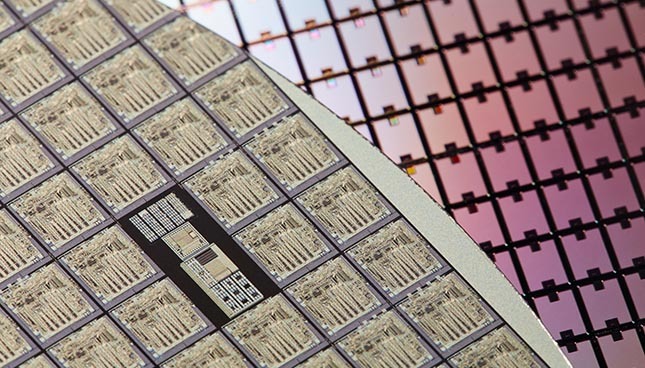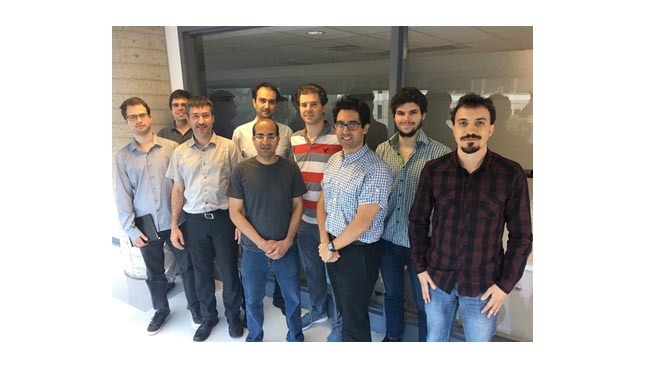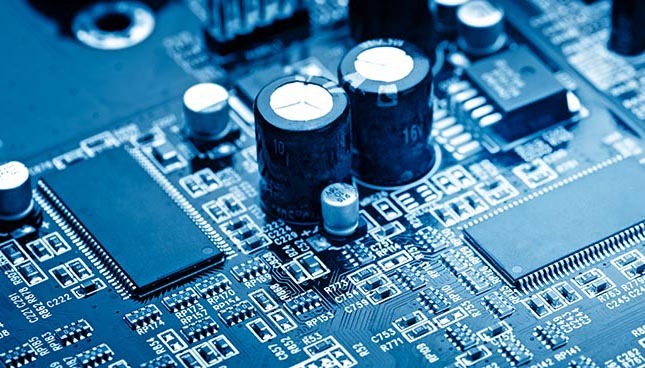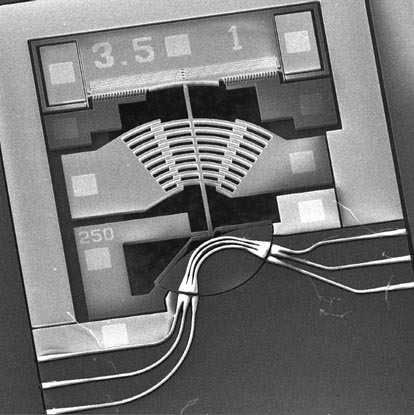At the crossroads of integrated circuits and microelectromechanical systems (MEMS)

Summary
The research of Montreal’s École de technologie supérieure Professor Frederic Nabki revolves around the miniaturization of systems that he is striving to make more affordable, efficient and multifunctional. It combines two key areas: analog, mixed and radiofrequency integrated circuits, and microelectromechanical systems (MEMS). These two areas of expertise also allow him to explore the integration of microsystems and micro-fabrication.
Introduction
Frederic Nabki, professor in the Department of Electrical Engineering at the École de technologie supérieure (ÉTS), and member of the Communications and Microelectronics Integration Laboratory (LACIME) and the Microtechnology and Microsystems Laboratory, combines two specialties: analog, mixed and radiofrequency integrated circuits, and microelectromechanical systems (MEMS). These two key areas also open the way to the integration of microsystems and micro-fabrication.
Analog Wireless Integrated Circuits
After several years of research, Frederic Nabki, along with Dominic Deslandes, another ÉTS professor, and students, developed a wireless transceiver with a new architecture abandoning the type used for several decades—the heterodyne wireless transceiver. This new 50 meter short-range wireless link, which is very promising in terms of performance and energy efficiency, gave birth to a start-up company hosted at Centech, Spark Microsystems.

The SPARK Microsystems Team
There are many applications that can benefit from this breakthrough, particularly in building automation, medical, automotive and consumer electronics sectors. Indeed, a large majority of sensors and connected objects require cable connections or batteries. Installing wiring is expensive and sometimes complicated; batteries also entail costs and pollute the environment. The SPARK transceiver consumes so little power that batteries can last up to 10 times longer, or it can even allow for a system to run without batteries! In some cases, the ambient energy (heat, vibrations and indoor lighting) could even be sufficient to provide the energy required.

MEMS Design
Similarly to electronics that have been miniaturized since the 1960s, some mechanical devices are currently miniaturized, notably for sensor applications. These devices, called MEMS, are microsystems (in the order of 50 μm) composed of mechanical elements that use electrical phenomena to measure, for example, rotation, acceleration, magnetic field… MEMS have the advantage of being compact and economical as they lend themselves well to mass manufacturing processes similar to those used in microelectronics.
Frederic Nabki is currently developing sensors to measure the stresses endured by the structure of certain critical aircraft parts during a flight. He is also developing MEMS sensors to capture the vibrational energy from an automobile or bridge and transform it into electricity. This type of device, called energy harvester, can power other types of sensors, allowing them to operate without batteries and minimizing costs and environmental impact. Automotive sensors that measure tire pressure without requiring a battery are a concrete example of this type of application.
Other research projects involving MEMS in which Professor Nabki is participating include the creation of ultrasound by vibration of MEMS transducers, and infrared sensors to capture images.
Integration of Microsystems and Micro-fabrication
 Professor Nabki takes advantage of his dual expertise to create new integrated circuit and MEMS systems that have been designed from the outset to pair perfectly. He is also working on integrating silicon photonics on MEMS (which then become MOEMS – micro-opto-electromechanical systems). This project is part of a research partnership with another Centech company, AEPONYX. The resulting MOEMS chip, marketed by AEPONYX, has the advantage of being smaller, cheaper, and above all, reconfigurable.
Professor Nabki takes advantage of his dual expertise to create new integrated circuit and MEMS systems that have been designed from the outset to pair perfectly. He is also working on integrating silicon photonics on MEMS (which then become MOEMS – micro-opto-electromechanical systems). This project is part of a research partnership with another Centech company, AEPONYX. The resulting MOEMS chip, marketed by AEPONYX, has the advantage of being smaller, cheaper, and above all, reconfigurable.

MOEMS optical switching device combining a micro-actuator and three integrated optical waveguides (created in Collaboration with AEPONYX).
In this same category, there is another research project whose objective is the design of a timing microsystems to synchronize circuits. In this project, Prof. Nabki is working on resonant MEMS structures that aim to replace quartz crystals for the synchronization of systems, present in all electronics, from watches to computers. Prof. Nabki is also working on the creation of interface circuits to make sensors more accurate and efficient.
Finally, Frederic Nabki is also interested in micro-fabrication to complement his MEMS expertise. He is working on a project for a moisture or gas sensor made from carbon nanotubes.
Additional Information
Students interested in these research projects can contact Professor Frederic Nabki for more information.



